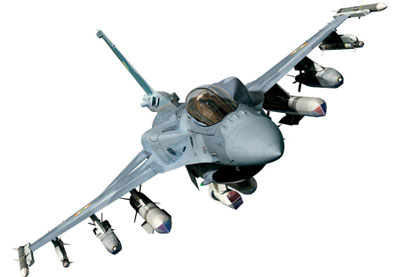INDIAN ARMED FORCES CHIEFS ON OUR RELENTLESS AND FOCUSED PUBLISHING EFFORTS

The insightful articles, inspiring narrations and analytical perspectives presented by the Editorial Team, establish an alluring connect with the reader. My compliments and best wishes to SP Guide Publications.

"Over the past 60 years, the growth of SP Guide Publications has mirrored the rising stature of Indian Navy. Its well-researched and informative magazines on Defence and Aerospace sector have served to shape an educated opinion of our military personnel, policy makers and the public alike. I wish SP's Publication team continued success, fair winds and following seas in all future endeavour!"

Since, its inception in 1964, SP Guide Publications has consistently demonstrated commitment to high-quality journalism in the aerospace and defence sectors, earning a well-deserved reputation as Asia's largest media house in this domain. I wish SP Guide Publications continued success in its pursuit of excellence.
- The layered Air Defence systems that worked superbly, the key element of Operation Sindoor
- Operation Sindoor | Day 2 DGMOs Briefing
- Operation Sindoor: Resolute yet Restrained
- India's Operation Sindoor Sends a Clear Message to Terror and the World – ‘ZERO TOLERANCE’
- Japan and India set forth a defence cooperation consultancy framework, talks on tank and jet engines
MMRCA Deal - On A Strike Mission

The easy handling Super Viper, even with its heavy external load, responds as a fighter should. Incidentally, the F-16IN can carry 60 per cent more external load than the stipulated MMRCA requirement for the IAF
Enroute To Target
The Electronic Warfare System (EWS) of the F-16IN Super Viper detects and identifies a new threat and locates its position. It is not in any of the pre-mission locations and your planned route of flight is taking you towards the newly detected threat. Using your hands-on-throttle-and-stick controls, you alter your route of flight by selecting the nearest steer point of your navigation route and ‘drag’ the point out of the lethality ring of this new threat. Satisfied that your mission route now goes around the threat, you accept the new point and it is computed into the overall mission flight plan. You feel the fighter accelerate as the auto throttle automatically adjusts ground speed to maintain your pre-mission time on target. You designate the new steer point for transmission via data link so that other members of the strike package will know your route has been modified.
The EWS is not jamming the threat, there is no need now, but you have deployed your towed decoy just in case there is no warning the next time a threat pops up. Flying this low the threat rings on the display are showing terrain masking and as you approach the target area, the masking of your path from threat radars is the best it can be. But you lose that masking for a short while as you start a quick climb to gain line-of-sight to the target and obtain a Synthetic Aperture Radar (SAR) map. The threat radars reach out to find you.
Face-To-Face With The Enemy
You take evasive action and dive down low. You are grateful for the easy handling Super Viper—even with its heavy external load it responds as a fighter should. Incidentally, the F-16IN can carry 60 per cent more external load than the stipulated MMRCA requirement. You examine the ultra-high resolution SAR map you obtained during your pop-up manoeuvre. Your aim points stand out clearly. Your internal digital jammer is requesting consent to go active now. With a flip of the finger it starts jamming multiple threats with deceptive techniques. You pass the initial point of the target attack and the autopilot commands an acceleration to weapon release speed. The EWS is displaying threat indications all around you now. Your radar and infrared systems tell you those enemy fighters are no longer orbiting but headed toward your strike formation.
Weapon release! You take control of the fighter and turn away from enemy aircraft. Your sensor shows enemy fighters are bearing down on you at Mach 1.4. Two new surface-to-air missile radars have popped up. The Tactical Situation Display (TSD) on that centre display is your best friend now. Everything is displayed together in the ultimate fusion of data. You use the situation awareness fusion of the Super Viper to manoeuvre your way around the new threats, the terrain following and avoidance systems to reduce your exposure, the missile warning system to guide your evasive manoeuvres. The enemy have turned away from you and climb to gain more real-time situation awareness with your passive and active sensors.
Fire To Destroy Threat
Your data link now shows two of your squadron mates are engaging the enemy aircraft while evading ground threats. You see the enemy aircraft turn to defeat the engagement and with a glance at the TSD, you instantly visualise that you now have the best firing solutions on these targets. With a few simple switch movements, you have detailed tracking data on the enemy aircraft; your long range missiles are ready. The TSD provides the final step before firing; it gives you all the data to confirm you meet the vital parameters of target engagement.
The Active Electronically Scanned Array radar is providing track data while maintaining search mode to ensure no other bandits pop up. Your missiles are away now and you have clear indication of their status and times to impact. The data links to the cockpits of your squadron mates informs them of your engagement with the enemy and they move in to support you. The enemy aircraft are soon destroyed—they ventured too fast, too deep into your strike formation and the shared situation awareness of the Super Vipers sealed their fate.





